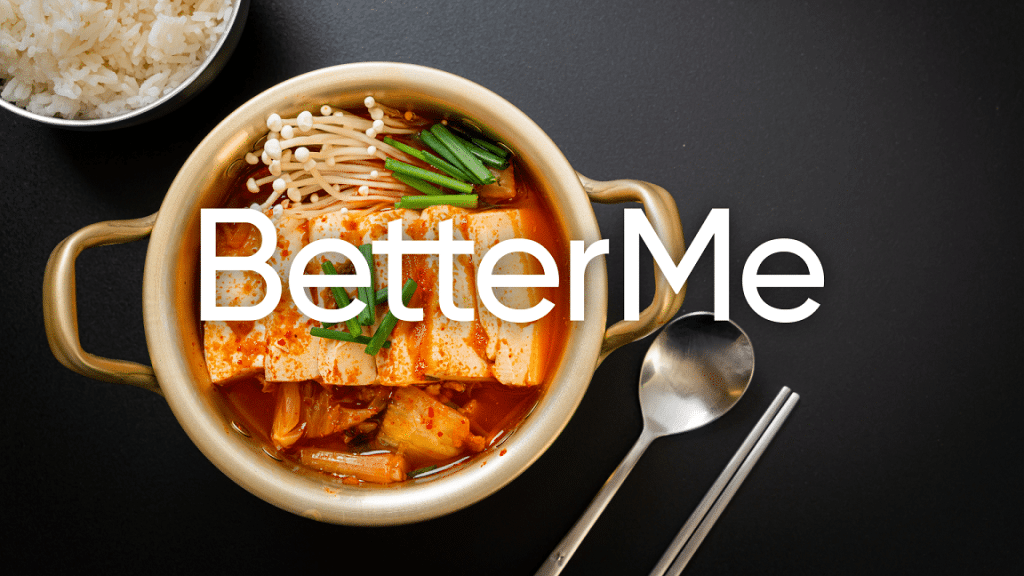If you’re looking for a way to improve your digestion, you might think that adding more fiber to your diet is the answer. But as it turns out, too much of a good thing (fiber) can actually have negative effects.
Get your personalized
meal plan!
The problem with eating too many high-fiber foods is that it may cause bloating, gas, and constipation. And if those aren’t enough reasons to cut back on them – there are other possible (although rare) side effects as well: temporary weight gain (due to water retention), intestinal blockage, and reduced blood sugar levels.
It’s not just about how much fiber you eat though; the type of fiber also matters. Insoluble fibers like wheat bran may have negative effects on people who have irritable bowel syndrome (IBS). The amount of fluid you drink is also an important factor.
Luckily, there are ways to relieve the symptoms from having too much fiber. In this article, we’ll look at the different types of fiber, what happens when you’ve had too much of them, and how to remedy this.
What Are The Types Dietary Fiber?
Dietary fiber, also known as roughage, is an indigestible plant carbohydrate that aids digestion. Fiber can be classified into two different types: soluble or insoluble.
Soluble Fiber
Soluble fiber dissolves in water and turns into a gel-like substance in the GI tract that helps lower blood cholesterol and glucose levels, which is important for cardiovascular health (2). Foods high in soluble fiber include:
- Oatmeal
- Lentils
- Beans
Insoluble Fiber
Unlike soluble fiber, insoluble fiber does not dissolve and is completely indigestible. The undigested pieces of food create bulk in the digestive tract, which stimulates regularity by quickly pushing waste through the intestines (1). Foods rich in insoluble fiber include:
- Whole grains such as wheat breads, whole wheat pasta, barley and bulgur
- Bran flakes
- Veggies like broccoli, green beans and carrots
Read More: High Fiber Foods For Pregnancy: What To Eat To Keep Your Gut Healthy
How Much Fiber Do You Need?
Most adults over the age of 19 need between 20 and 38 grams of fiber per day, depending on the amount of physical activity, height, and several other factors (4).
The United States Department of Agriculture recommends that you get 14 grams for every 1,000 calories you consume to maintain a healthy weight (3). So for example, if you consume 2,000 calories per day, you need 28 grams of fiber.
Most adults should not eat more than 80 grams of fiber on a daily basis because it can cause intestinal problems like diarrhea and bloat (6). However, most people get less than the recommended amount of dietary fiber. If you are interested in increasing your intake of dietary fiber, be sure to do so gradually.
Increase your daily fiber intake by no more than 5 grams each week to prevent bloating and other side effects.
What Are The Side Effects Of Eating Too Much Fiber?
If you ate too much fiber, you may experience these symptoms:
Constipation
Taking a lot of fiber without drinking enough water can lead to constipation (7). When you increase your fiber intake, you also need to increase your fluid intake. Movement or exercise can also help get things moving.
Bloating
Foods that are high in fiber can cause gas, bloating and diarrhea (7). When you eat a food high in fiber it is digested very slowly so the bacteria in your gut has time to ferment it which causes gas. If you add more fiber when you are already feeling bloated, this could cause further discomfort. Increasing fiber intake gradually rather than suddenly can help minimize this.
Diarrhea
Even though fiber may help with constipation, having too much fiber can lead to diarrhea, especially if you create a sudden drastic increase in the amount of insoluble fiber your intestines are exposed to. Therefore adding more fibre into your diet gradually will help you avoid or reduce the symptoms of diarrhea (7).
Intestinal Blockage
When eaten in excess, large amounts of fiber without enough fluid may cause intestinal blockages if they are unable to be fully digested or excreted by your body. While this is rare, it may be possible for large amounts of fiber that are not able to be digested to block the digestive passage (6).This is serious and requires medical attention.
Lean and toned up body isn’t just a far-fetched fantasy. Check out the BetterMe app and watch it propel your weight loss journey into high gear!
How To Relieve Too Much Fiber Side Effects
If you’re consuming too much fiber in your diet, the following remedies can help:
Drink Water
Fiber needs water for it to function effectively. In the case of soluble fiber, the process of passing the fiber through your digestive system creates a gel-like substance that can absorb water and add bulk to your stool (8). Without enough water, this gel will become too thick and create dry, hard stools which can be difficult to pass.
Decrease Your Consumption Of Fiber
When you temporarily reduce your intake of fiber, you allow your digestive system time to heal and regulate itself. If increasing your water consumption does not help with constipation then slowly remove concentrated sources or high fiber foods from your diet until symptoms have been reduced. You can then reintroduce fiber gradually.
A low-fiber diet entails eating no more than 10 grams of fiber each day. It’s one way of managing irritable bowel syndrome. Some healthy, low fiber foods to eat while on this diet, include:
- Canned or cooked fruits
- Canned or cooked vegetables
- Eggs, meat, and fish
- Milk, yogurt and hard cheese
Switch Your Fiber Sources
If reducing how much dietary fiber you consume doesn’t relieve uncomfortable side effects, try switching up where you get it from. In case you’re experiencing constipation, try switching to insoluble fiber. If you’re experiencing loose stools, try switching to soluble fiber.
Instead of eating foods that are high in fiber, switch over to foods that contain fermentable fibers. Fermentable fibers, such as those found in bananas and garlic, can be broken down by your gut microbiome and they also prevent constipation by increasing the bulkiness of stools without increasing the quantity of stools produced.
Exercise More
High fluid intake and regular exercise promote the optimal functioning of the digestive system. While it may seem counterintuitive to exercise when your bowel movements are being interrupted, it has long been known to help regulate the body’s natural processes and improve digestion because it increases blood flow which can relax muscles and ease constipation. It also helps move food along through your digestive tract at a steadier pace so you will have fewer difficulties with bloating or gas (5).
Avoid Foods That Cause Bloating
Some foods that contain high amounts of fiber may cause additional discomfort if you’re already experiencing too much fiber consequences such as constipation or diarrhea; therefore avoid these foods until you’ve experienced some relief from them:
- Beans and Legumes
- Nuts
- Most Whole Grains Including Oats, Barley, And Brown Rice
- Most High Fiber Cereals
Choose Cooked Over Raw Veggies
It is generally recommended that you eat your veggies raw or at least steamed because the cooking process will break down some of its cellulose walls which helps to make them easier to digest. However if you want to avoid the effects of too much fiber and you do choose to eat them raw, make sure it’s finely chopped in small pieces to aid your digestive system and limit gas and bloating.
If you are still experiencing too many fiber side effects, reduce your consumption of this particular food group even further to give your body a chance to recover. If the problem persists, try eliminating the produce all together for several days to see if that helps relieve these symptoms.
Read More: Keto Fiber Foods: 15 Low-Carb, High-Fiber Foods That Won’t Kick You Out Of Ketosis
The Benefits Of High Fiber Diet
Fiber is good for you, as long as you are tolerating it well. When you eat a high fiber diet, it keeps the digestive system operating as it should. When you consume plenty of soluble and insoluble fiber, your digestive system stays healthy and happy. This is extremely important for the overall health of the individual. Some benefits of a high fiber diet include:
Gut Health
Fiber allows good bacteria to grow by feeding off of these indigestible carbohydrates in the diet, which decreases bad bacteria populations like E. coli or H. pylori that cause illness or infection within the gut (2).
Cardiovascular Health
A high fiber diet may to decrease LDL cholesterol levels, which protects you from cardiovascular disease. This can be seen by the lowering of total serum cholesterol and low-density lipoprotein (LDL) levels in the blood plasma. In addition to that, a high-fiber diet also increases HDL or good cholesterol which again helps protect the body from developing heart disease (2).
Looking for a way to break the vicious cycle of weight loss and tone up all the jiggly parts? Watch the extra pounds fly off and your muscles firm up with the BetterMe app!
Weight Management
When you eat a high fiber diet it leaves you feeling full for longer which reduces appetite resulting in weight loss. It is often used as a part of many different diets because of this reason alone.
Prevents Constipation
By eating a high fiber diet, the stool becomes larger and moves more quickly through the digestive tract, which prevents constipation.
Stabilize Blood Sugars
Fiber slows down the absorption of sugars so blood glucose levels do not spike, improving your body’s response to blood sugar changes. This is beneficial for those with diabetes or pre-diabetes because it can help keep their condition under better control (2).
The Bottom Line
A high fiber diet can be beneficial to anyone regardless of age or sex, but if you are experiencing too much fiber side effects it is best to go back to the basics and gradually increase your fiber levels. Try incorporating one or two extra servings of fruit or veggies into your daily meals and measure how you feel for a few days before increasing further.
DISCLAIMER:
This article is intended for general informational purposes only and does not address individual circumstances. It is not a substitute for professional advice or help and should not be relied on to make decisions of any kind. Any action you take upon the information presented in this article is strictly at your own risk and responsibility!
SOURCES:
- Effect of dietary fiber on constipation: A meta analysis (2012, nih.gov)
- Effects of Dietary Fiber and Its Components on Metabolic Health (2010, nih.gov)
- How much (dietary) fiber should I eat? (2019, usda.gov)
- Increasing Fiber Intake (n.d., ucsfhealth.org)
- Potential benefits and hazards of physical activity and exercise on the gastrointestinal tract (2001, nih.gov)
- TOO MUCH FIBER IN YOUR DIET? SYMPTOMS AND EFFECTS OF FIBER OVERLOAD (n.d., brightlifeclinic.com)
- Warning signs of too much fiber (2019, mdlinx.com)
- Water supplementation enhances the effect of high-fiber diet on stool frequency and laxative consumption in adult patients with functional constipation (1998, nih.gov)













